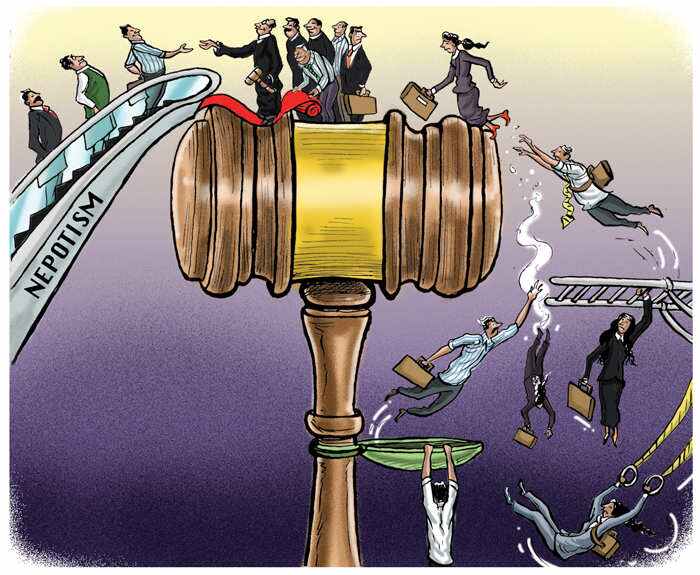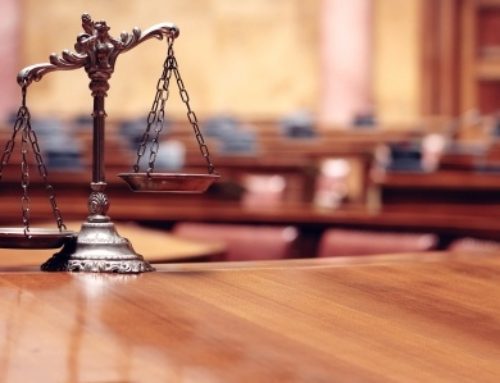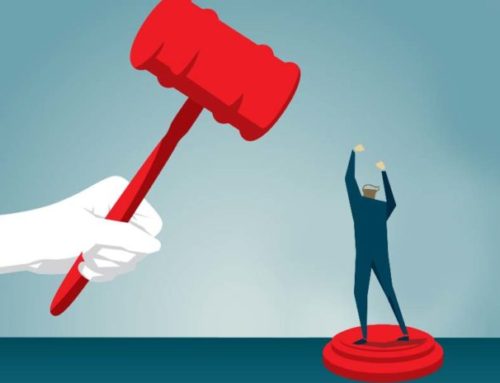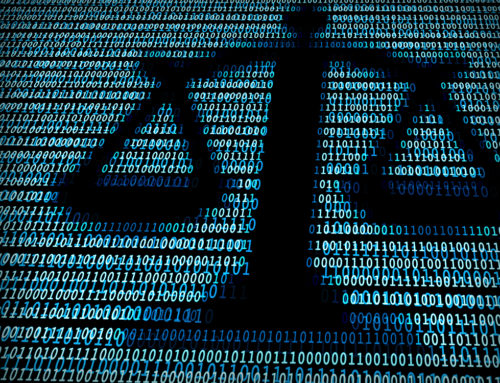Editor’s Note: In this blog post, Sanchit Khandelwal highlights the nepotism and favouritism prevalent in appointment procedures of the judiciary, selection of senior counsels, and at the bar. Due to such nepotism and favouritism, young lawyers and subordinate judiciary judges from marginalised communities suffer unduly. This necessitates the need for reform.
Introduction
Recent findings and high-profile incidents have questioned the very principles of the Indian legal fraternity. All the hushed rumours that are heard in the court corridors are now out there in the public domain. The wide prevalence of nepotism, casteism, favouritism, targeted transfers, unmeritorious and opaque appointments, along with post-retirement bestowments is a reflection of the trade-offs made with the principles of the legal profession and the Indian legal system, both at the level of the bar and the bench.
Legal Profession in India is not Inclusive
There is no dearth of evidence and real-life examples of the fact that the legal profession continues to be a bastion of a few privileged and resourceful families. For instance, Indira Jai Singh, a senior counsel, has previously stated that “there is a lot of favouritism and then there is also nepotism in the sense that people who are already seniors, after them their children also become senior.” The former Additional Solicitor General also questioned the designation of senior counsels in absence of any criteria or meritocracy. Designation of advocates as senior counsels with no major accomplishments in the legal field and open alignment with those in powers is not something unheard of. In the absence of a meritocracy, such an impervious system fosters oligarchic tendencies.
Even after investing a substantial amount of time and money in legal education, a young lawyer is often remunerated less than minimum wages. A survey by Vidhi Centre for Legal Policy (Vidhi) showed that more than 79% of advocates with less than two years of practice at the Bar fetch less than Rs. 10,000 per month. Such gross underpayment to young lawyers has resulted in the loss of bright legal minds of the National Law Schools to lucrative corporate legal firms.
Several renounced practitioners have been vocal about the discrimination and inhumane behaviour that the young lawyers have to bear in their day to day practice. While the kin and juniors of judges and senior advocates are made comfortable with jokes and witticism in the courtroom, the young and struggling lawyers are often shouted at and asked to shut up. Jurist and senior advocate Fali S. Nariman in his autobiography, ‘Before Memory Fades’, talked about how prima facie discrimination exists on the basis of the chamber a lawyer is a part of and how privileged lawyers, belonging to the chambers with similar areas of practice, get designated to senior advocates and eventually elevated as judges.
Absence of Diversity in Indian Judiciary
Nepotism in the Indian judicial system is so rampant that practically every third high court judge is kith and kin to another judge or senior lawyer. Such practicalities of the legal fraternity have rendered the profession bereft of diversity. The representation of socially-marginalised groups in both the higher and the lower judiciary remains depressing. Only 10% of the judges in High Courts (hereinafter referred to as ‘HC’) are women, relatively low to 27% in the lower judiciary. The numbers are even more worrisome for other backward classes. OBCs constitute a mere 12% of the lower judiciary, which is significantly lesser than their population share estimated to be around 40%. A diverse judiciary with deeper understanding can provide newer insights into the problems of the socially marginalised groups.
Lack of Transparency and Accountability
The appointment of judges to HCs and the Supreme Court (hereinafter referred to as “SC”) is made by the Collegium, headed by the Chief Justice of India (hereinafter referred to as “CJI”) and four senior-most judges of the SC. The Indian Constitution says that judges of the SC and HC are to be appointed by the President and speaks of a process of consultation. The Collegium of judges finds no mention in the Constitution and is nothing but judicial invention. The Collegium system was introduced in the Second Judges Case of 1993, wherein the SC held that ‘consultation’ really meant ‘concurrence.’ The case accorded primacy to the CJI in matters of appointment and transfers while ruling that the term “consultation” would not diminish the primary role of the CJI in judicial appointments. This Collegium comprised of the CJI and two senior-most judges of the SC. Later, in the Third Judges Case of 1998, the Collegium got expanded to a five-member body, comprising the CJI and four of his senior-most colleagues at the SC. The Collegium is also responsible for the transfer of HC judges (Article 222).
Several experts and practitioners of law have time and again questioned the working and the very existence of the Collegium system. Collegium as a system of appointing judges to higher judiciary seems to be alien to the ideas espoused by the constitution makers. The lack of transparency and absence of any sort of formal criteria for appointment or elevation of judges to higher courts in the present system presents multiple worrying implications. Retired SC judge Justice Ruma Pal has said: “The mystique of the process, the small base from which the selections were made and the secrecy and confidentiality ensured that the process may on occasions, make wrong appointments and, worse still, lend itself to nepotism.”
To this day, there exists no standard and structured process to examine if a judge, who is recommended by the collegium, has any conflict of interests. The collegium has been fraught with stern allegations of different types of alleged conflicts of interest among the members of the collegium and their recommended appointments to the HCs and the SC. In 2018, the Government of India in its response to the Collegium’s 33 recommendations for the Allahabad HC, highlighted that atleast 11 of them were related to sitting and retired HC and SC judges. In 2019, Rang Nath Pandey, the then Allahabad HC judge, in his open letter to the PM alleged nepotism, favouritism and casteism in the appointment of judges to higher courts.
Systemic Membership to “Old Boys’ Club”
Article 217 of the Constitution states that HC judges may either be practising lawyers or members of the subordinate judiciary. General practice, however, reflects the unwritten bias that explicitly favours appointment of judges from the bar over judges from the services. The available data show that the median appointment age for judges who are appointed from the bar is 49 years and that of judges appointed from the services is 56 years. This difference in the appointment age affects not only their average tenure on the bench as the HC judge but also their chances of being a Chief Justice or on the HC Collegium to recommend future appointments to the HCs.
Moreover, the informal criteria used to assess suitability for appointment to the higher judiciary appears to be an income assessment (in order to assess the volume of the candidate’s practice) and the number of reported judgments where the candidate has argued. Now, mere knowledge of the law is only one component of successful litigation practice, building one requires tremendous social capital that socially disadvantaged sections of the society tend to lack.
As a result of this, the composition of the HCs has become, literally, an “old boys’ club” featuring largely male, upper-caste, former practising lawyers. Later the SC judges are selected from the pool of “old boys’ club.” Such compromised appointments at the highest level of the judiciary guarantee the self-perpetuating cycle of privilege as they decide future appointments to the HCs.
The Way Ahead
The Indian legal fraternity has become cloistered and oligarchic. The dwindling number of bright minded young lawyers sans contacts, questions the stakeholders of the profession that tries to implement inclusivity and yet refuses to be inclusive at its very foundation. A judiciary which reflects the composition of the society it serves enjoys a greater degree of legitimacy, as it signals an equality of opportunity for marginalised groups. The present situation calls for the Collegium to formulate a set of rules and regulations that will govern the determination of a conflict of interest amongst the members of the Collegium who are involved in the selection of judges.
The issues of diversity and representation cannot be divorced from the issues of unaccountability and non-transparency in the present appointment procedure. The discussion on social hegemony in the judiciary is hampered by the lack of concrete statistical information regarding judges and advocates. India can learn from the United Kingdom, who in 2010 formed the Judicial Diversity Taskforce. The UK government publishes a yearly judicial diversity report relating to judges and non-legal members appointed in courts, tribunals and magistrates. The information (gender, ethnicity, age, professional background) is collected in the form of voluntary, non-mandatory self-declarations.
Further, the introduction of All India Judicial Services (hereinafter referred to as AIJS), on the lines of civil service examination, can help ensure the aspect of meritocracy in the judiciary. The AIJS, proposed for the first time in the 14th Report of the Law Commission of India (1958), has been lingering in the backdrop of the judicial reforms debate for decades. The creation of an AIJS will necessarily mean transferring the recruitment and appointment powers of district court judges, from the HCs and State Governments. Additionally, conducting annual AIJS examination will ensure timely filling of vacancies in an objective manner and the constant struggle between judiciary and government for primacy over judicial appointments will seize to exist.
The actions of the judiciary should be reflective of the values it tends to uphold. As the third pillar of democracy, the judiciary needs to imbibe the democratic principles it is mandated to protect. Judicial reforms and reforms of the legal practice have to go hand in hand in order to disrupt the culture of “old boys’ club.”
Sanchit Khandelwal is a student at NALSAR University of Law, Hyderabad. He is also an editor and contributor to the Nyaya Blog.








Leave A Comment